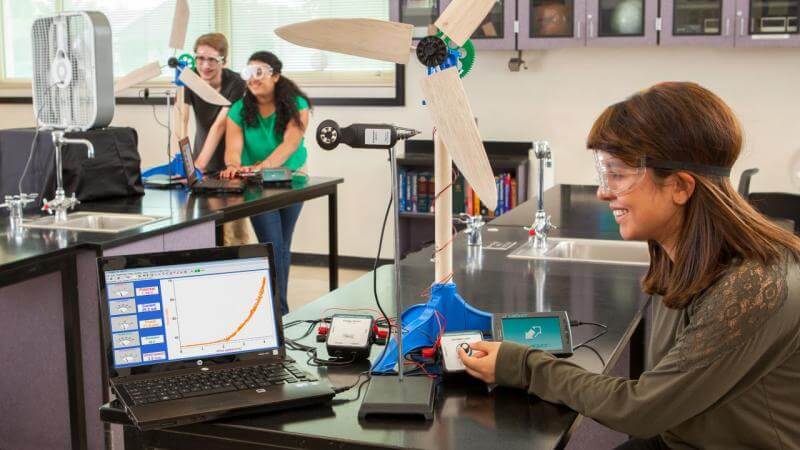 I was getting my haircut last week, and my hairdresser told me that her daughters are interested in science. She then asked me, “What should I tell them about science-based careers?” “I really do not know what scientists and engineers do?” I could see my hairdresser’s point-of-view though, I really did not know much about engineering or science-based careers until I went to college myself. I also have a son who is also interested in science, technology, and engineering, and fortunately, I have been able to easily tell him about the work in these careers since I have worked as an engineer and scientist for 19 years.
I was getting my haircut last week, and my hairdresser told me that her daughters are interested in science. She then asked me, “What should I tell them about science-based careers?” “I really do not know what scientists and engineers do?” I could see my hairdresser’s point-of-view though, I really did not know much about engineering or science-based careers until I went to college myself. I also have a son who is also interested in science, technology, and engineering, and fortunately, I have been able to easily tell him about the work in these careers since I have worked as an engineer and scientist for 19 years.
If your child has an interest in science-based careers, you should encourage them to follow a career path in this direction. Many of those who pursue these studies love science and have a natural curiosity about natural phenomena or building new things. We can encourage our kids to build structures out of Legos, cardboard, paper, plastic, or other items. Basic chemistry, plant, or biology experiments or learning will also excite kids with an interest in science.
Engineers and scientists have revolutionized the world we live in time and time again. They helped to invent the car. They helped to create historical monuments. They helped to perfect the Internet. Almost everything that we use in our daily lives has been designed or researched by an engineer or scientist. This will not only interest your kids, but it will also motivate them to learn. There are endless examples of what they can create in a career as an engineer or scientist.
If your child enjoys science or building, then he or she will be able to find a job in an area that they love. Are they interested in fashion? Scientists and engineers are responsible for fabrics and fashion developments. Are they interested in cars? Engineers develop new technology for cars, make them and fix them. Are they interested in computers? Software engineers get to build software and integrate it into new and old systems alike. Are they interested in renewable energy? There is a myriad of future careers revolutionizing the energy of the future. Of course, this is a simplistic view of science and engineering, but there are careers in all sorts of industries, so they can get a job that caters to their interests.
There is no doubt that becoming an engineer or scientist is hard work. You have to get good grades at school, study science and engineering at a university, and then perhaps obtain additional qualifications. This can take years; however, it is incredibly rewarding, and there is no limit where your child can go from there. If he or she wants to be a manager at a major firm, such as IBM, then it is possible. If he or she wants to start a business and become an entrepreneur with his or her own ideas, then it is possible. If he or she wants to invent the future energy source – it is also possible! The sky is the limit.
It is ridiculous in this day and age of equality that certain jobs are still considered to be male jobs, however, this is the case with some science and engineering jobs. Of course, people in the industry see women in high powered roles all the time, but to outsiders, it appears to be different. If your daughter says that she wants to be an engineer or scientist, then you should offer your support when people tell her that she cannot follow that career path. Girls make good engineers too.
Although this should not be a priority for your kids when considering these careers, telling them that it is possible to make a good living, have job security, and endless opportunities is important. Young children usually do not have a concept of money, however, older children, particularly teenagers, may want to pursue a career that offers endless opportunities is not a bad thing. Technical individuals with knowledge and experience are invaluable in numerous industries, and they will be able to do something they love for the rest of their life!
No matter how old your child is, you should tell them that science & engineering can be fun. Experimenting with technology, putting ideas into practice, coming up with new innovations is an awful lot of fun no matter how old you are. If your child enjoys this kind of learning, then a science or engineering career is definitely the career for them. Not many people get to go to work every day and have fun — so these careers really push the boundaries in that way. I have put together some simple experiments that can be done at home with basic objects and food.
There are many types of experiments that children can do with plants, fruits and vegetables to learn about science. Kids are already full of wonder and questions, and love to explore nature and science. Basic chemical and physical science consist of chemical reactions and the study of liquid properties. To introduce these basic concepts, fruits and liquids found in your kitchen will be used. When you go to the grocery store to purchase these foods, you are typically thinking of “tasty” food to eat. However, you may not realize that these fruits and vegetables can cause chemical reactions, are often acidic, and can conduct electricity.
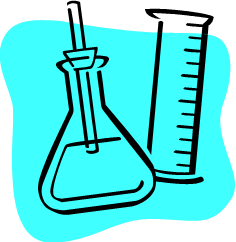

An acid has a pH under 7. Liquids that taste "sour" are acids. The lower the pH of a liquid, the more likely it is to burn your skin. Examples of acids are vinegar and lemon juice.
A base has a pH greater than 7. Liquids that taste "bitter". Strong bases are ammonia and bleach, and these can be dangerous.
There are all different types of chemicals, some are acids, bases or neutral. Whether a chemical is acidic or basic is dependent upon its chemical structure. There are many common acids and bases that we use on a daily basis. Some of these are shown in Table 1.
| Food | pH |
| Lemons | 2.3 |
| Strawberries | 3.2 |
| Tomatoes | 4.6 |
| Potatoes | 6.1 |
| Eggs | 8.0 |
Table 1. pH of Some Common Foods.
Caution: Some acids and bases are dangerous to humans. In these experiments, lemon juice, vinegar, and baking soda can all be dangerous, so be cautious was dealing with these chemicals. It is important to wear gloves.
Why do some pennies look dirtier than others? Why do some pennies look shiny? One of the reasons why some pennies look dirtier than others is due to how dirty they actually are! However, most pennies look dirtier than others due to a copper oxide layer that forms on the penny. The copper penny reacts with the oxygen in the air to form the copper oxide layer.
Chemicals can do all sorts of things. There are also chemicals that can make "dirty" objects look like new again. These are acids! This experiment will make the pennies look new again using different acids found in your kitchen.
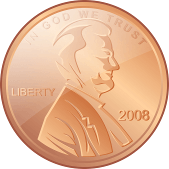
1. Pour the acid of your choice into a cup.
2. Drop a penny into the acid.
3. After a few minutes, take out the penny, and lay the penny on a paper towel to dry.
Try polishing pennies with acids and bases:
• Vinegar (acetic acid)
• Orange juice (citric acid)
• Ketchup (sodium acetate)
• Coca-cola (phosphoric acid)
All of these liquids/foods can clean a penny because they are acidic.
The different types of acids react with the copper oxide to form copper acetate. When the pennies are rinsed off with water, the copper acetate dissolves, leaving the penny shiny.
There are many properties that scientists use to describe materials. Density is one of these properties. Density measures how "solid" a solid, liquid or gas is. The formula for density is how much something weighs divided by the amount of space (volume) that it takes up (Density = grams/liters). The less dense something is, the less packed the particles are, and the more space it takes up.
• Grapes
• Water
• Sugar
• Oil
• Corn syrup
Place different combinations of these materials into cups to determine which materials are more and less dense. The fluids and materials that float on top are less dense than the layers/objects that sink to the bottom.
1. Put corn syrup into a cup.
2. Add food coloring if desired.
3. Pour oils on top of the corn syrup. Do these liquids mix?
4. Pour water on top of the oil. What does the water do when you pour it in?
At this point, you should have three distinct layers in the bottle. Write down which liquids or layers are more or less dense!
Lava lamps have been used for many decades as a decoration, however, some interesting science can be learned from these lamps! Creating a lava lamp demonstrates different densities between liquids and also chemical reactions.
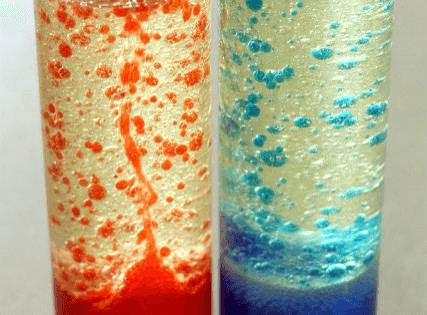
• Clean plastic bottle with a cap
• Vegetable oil
• Food coloring
• Alka-Seltzer tablet
• Water
1. Fill the bottle 1/2 full with vegetable oil.
2. Fill the remainder of the bottle with water.
3. Place about 10 drops of food coloring into the bottle.
4. Drop one of the pieces of Alka-Seltzer into the water.
5. After it has stopped fizzing, add another piece of Alka-Seltzer.
6. Continue adding Alka-Seltzer to create the lava lamp that you desire.
As you can see from the lava lamp, water and oil do not mix. The water molecules do not mix with the oil molecules due to the difference of density and solubility (the ability of two liquids to mix together). In addition, the food coloring mixes only with the oil.
When you pour the water into the bottle with the oil, the water sinks to the bottom. This occurs because the water is heavier (or more dense) than oil.
When the Alka-Seltzer tablet reacts with the water, carbon dioxide bubbles form. The bubbles attach themselves to the colored blobs, and cause them to float to the surface. After the bubble pops, the colored blob sinks back to the bottom.
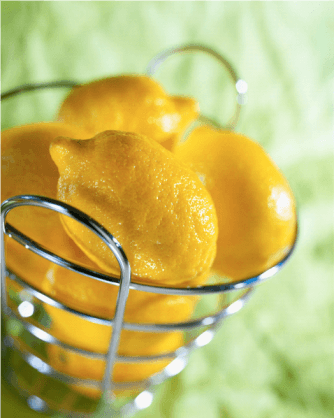
• Citrus fruit
• Copper nail, wire or copper penny
• Zinc nail or screw or galvanized nail
• Copper wire
• Something to be powered -- this can be a LED, small light bulb, or a small motor
1. Roll the fruit gently on the table to loosen the fruit up in order to have better electron flow.
2. Insert the zinc and copper nails into the fruit about 2" apart.
3. Connect a wire from the zinc screw to the device to be powered.
4. Connect another wire from the copper wire to the device to be powered.
5. Check to see if the LED or other device is powered. If the LED does not immediately light up, check to make sure that is connected correctly. It may need to be flipped around.
6. If your LED does not immediately light up, try connecting several lemons together. The type of device that you are trying to power may need a different voltage and current. This will dictate the number of fruit halves that are required. You can cut several lemons in half, and then connect the lemons in series or in parallel in order to generate enough voltage and current to power the LED, bulb, motor or other device.
Citrus fruit are acidic, which makes them good conductors of electricity. The fruit battery will produce electricity in the same manner as creating a battery out of a potato. Batteries can be made out of each and the electrical output can be tested and compared. Once your child can do these experiments, there are a myriad of renewable energy kits and experiments that can be found on the fuelcellstore.com website to continue to expand and grow your child’s knowledge and skills!

 Posted by
Posted by
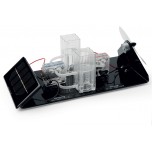

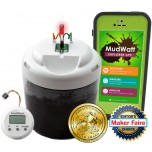
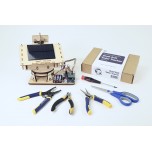
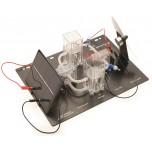
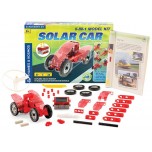












Enter the code in the box below: